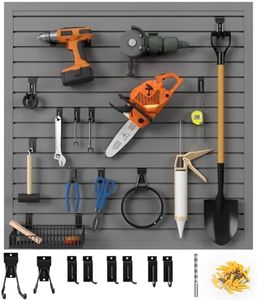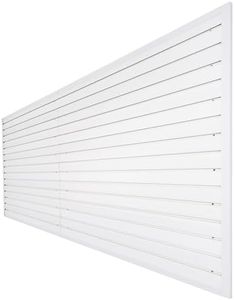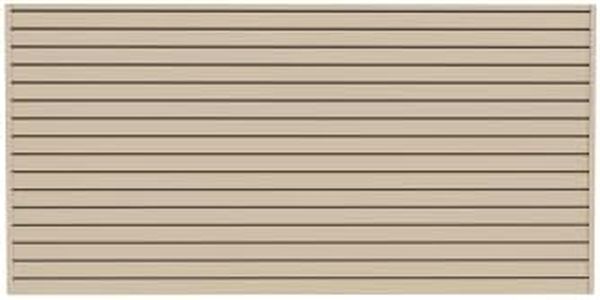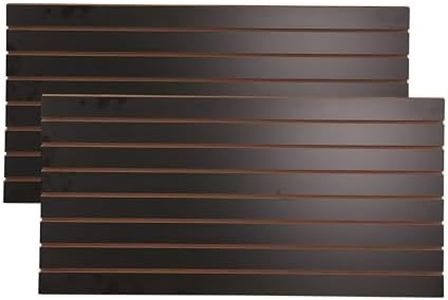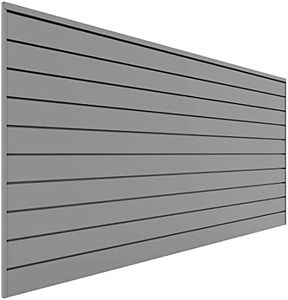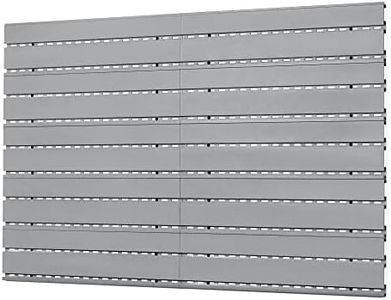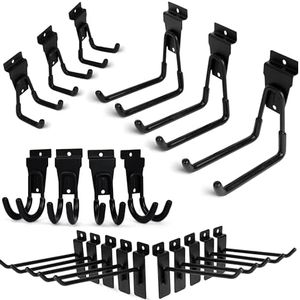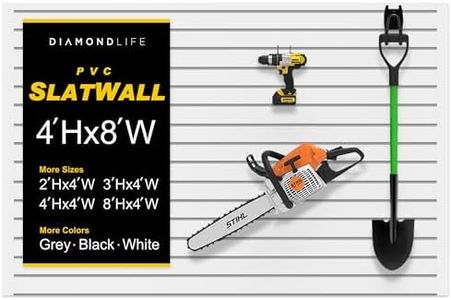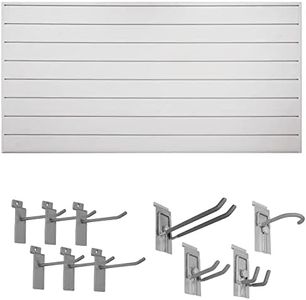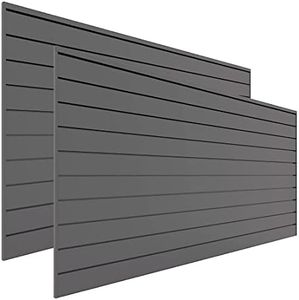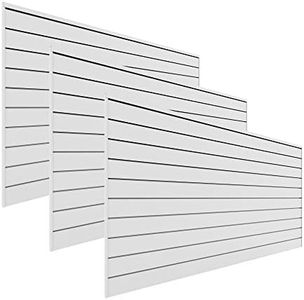We Use CookiesWe use cookies to enhance the security, performance,
functionality and for analytical and promotional activities. By continuing to browse this site you
are agreeing to our privacy policy
10 Best Slatwall Systems 2025 in the United States
How do we rank products for you?
Our technology thoroughly searches through the online shopping world, reviewing hundreds of sites. We then process and analyze this information, updating in real-time to bring you the latest top-rated products. This way, you always get the best and most current options available.

Buying Guide for the Best Slatwall Systems
Choosing the right slatwall system for your needs can greatly enhance the organization and functionality of your space, whether it's a garage, retail store, or workshop. Slatwall systems are versatile and can be customized with various accessories to hold tools, merchandise, or other items. To make an informed decision, it's important to understand the key specifications and how they align with your specific requirements.MaterialThe material of the slatwall system is crucial as it determines the durability and weight capacity. Common materials include MDF (medium-density fiberboard), PVC, and metal. MDF is cost-effective and suitable for light to moderate use, while PVC is more durable and resistant to moisture, making it ideal for garages or damp environments. Metal slatwalls are the most robust and can handle heavy-duty applications. Choose the material based on the weight of the items you plan to hang and the environment where the slatwall will be installed.
Panel SizePanel size refers to the dimensions of each slatwall panel. Standard sizes are typically 4x8 feet, but smaller or larger panels are also available. Larger panels cover more area quickly but may be harder to handle and install. Smaller panels offer more flexibility in fitting into tight spaces or around obstacles. Consider the size of the area you want to cover and whether you need to work around existing structures when choosing panel size.
Slot SpacingSlot spacing is the distance between the grooves on the slatwall where accessories are attached. Common spacings are 3 inches, 6 inches, or custom intervals. Closer spacing allows for more precise placement of hooks and shelves, providing greater flexibility in organizing items. Wider spacing may be sufficient for larger items and can reduce the overall cost. Think about the types of items you will be storing and how frequently you might need to adjust their positions.
Weight CapacityWeight capacity indicates how much weight the slatwall system can support. This depends on the material, thickness, and installation method. Higher weight capacity is essential for storing heavy tools or equipment, while lower capacity may suffice for lighter items like clothing or small accessories. Assess the weight of the items you plan to hang and ensure the slatwall system can handle it without risk of damage or failure.
FinishThe finish of the slatwall affects both its appearance and durability. Common finishes include melamine, laminate, and powder coating. Melamine and laminate finishes offer a variety of colors and patterns, making them suitable for retail environments where aesthetics are important. Powder-coated finishes are more durable and resistant to scratches and corrosion, ideal for industrial or garage settings. Choose a finish that complements your space and meets your durability needs.
Accessory CompatibilityAccessory compatibility refers to the range of hooks, shelves, baskets, and other attachments that can be used with the slatwall system. Some systems are compatible with a wide variety of accessories, while others may require proprietary attachments. Ensure that the slatwall system you choose can accommodate the specific accessories you need for your organization goals. Consider future needs as well, as you may want to add or change accessories over time.
Most Popular Categories Right Now
